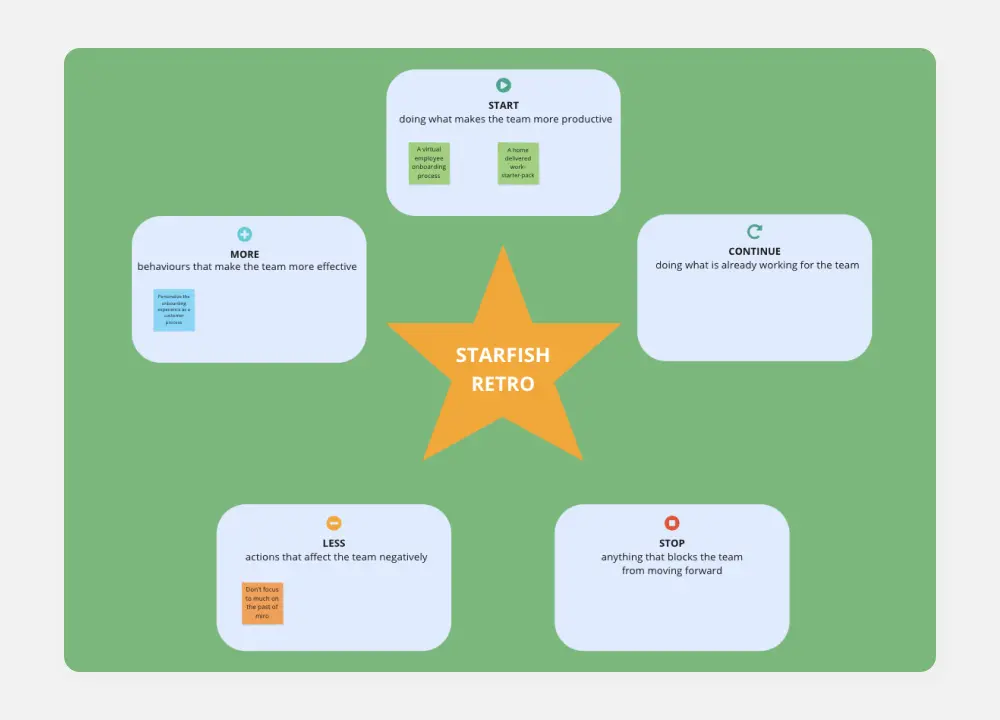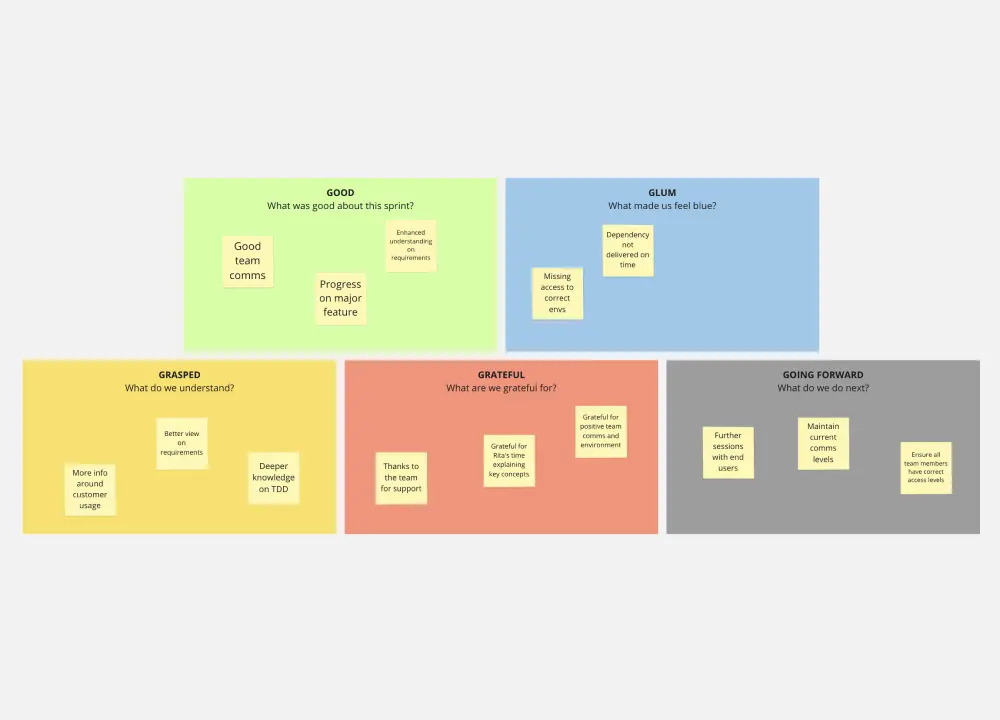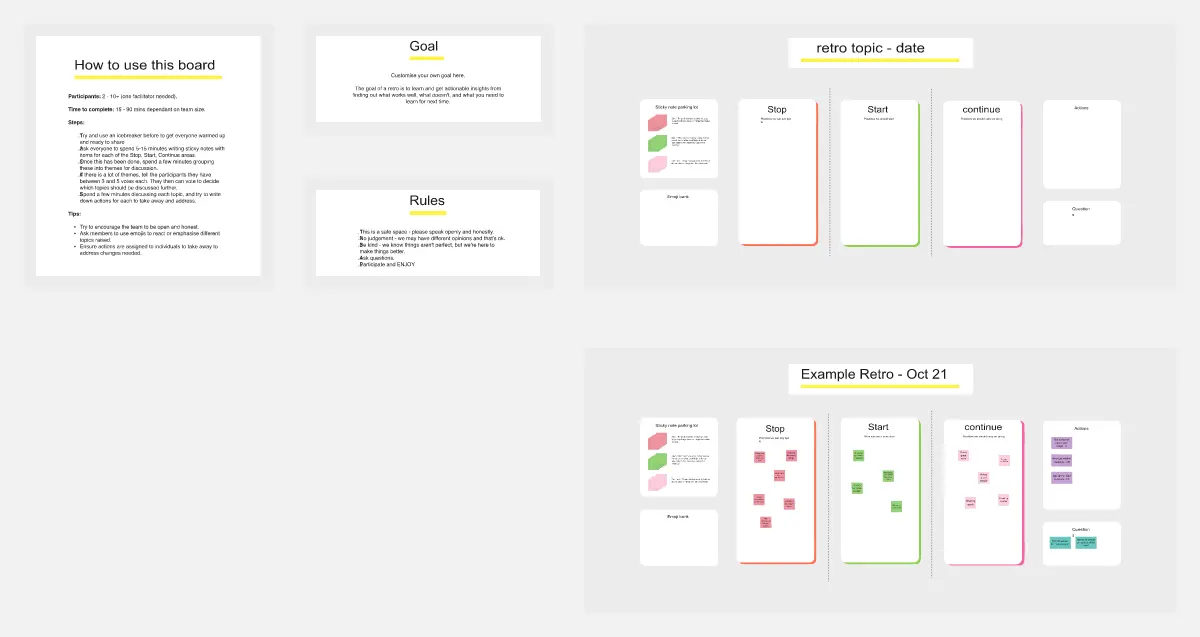All templates
The 4-Step Retrospective

Clyde D'Souza
Software Engr. Digital Content Creator.
Hi, I'm Clyde. I'm a software engineer and digital content creator based in Auckland, New Zealand. I write about various technologies, teach online classes, make videos, and I'm also the author of a children's bedtime storybook!
Categories
Similar templates
Starfish Retrospective
277 likes
6K uses

5Gs Retrospective
128 likes
1.2K uses

Start, Stop, Continue Retrospective
269 likes
3.8K uses

Starfish Retrospective
277 likes
6K uses

5Gs Retrospective
128 likes
1.2K uses

Start, Stop, Continue Retrospective
269 likes
3.8K uses
